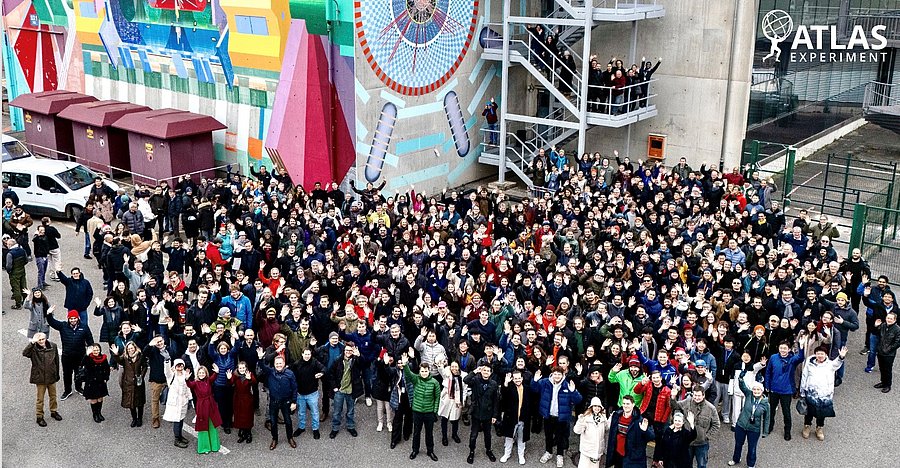Physics
ATLAS experiment earns researchers at the University of Wuppertal a prestigious award

Great joy: Thousands of researchers around the world are participating in the ATLAS collaboration. They have been honoured with the Breakthrough Prize in the field of fundamental physics. // Photo CERN
With a length of over 40 metres and a height of around 25 metres, ATLAS is one of the largest and most complex scientific instruments ever built. The particle detector is used in the world's most powerful particle accelerator, the Large Hadron Collider. It was developed to investigate the basic building blocks of matter and the forces that determine our universe.
Its state-of-the-art systems track particles produced in particle collisions at unprecedented energies, enabling discoveries such as the Higgs boson and the search for new physics beyond the standard model.
The Breakthrough Prize, which is often referred to as the Oscars of science and comes with prize money of around three million US dollars (2.7 million euros), highlights the significant contributions of the ATLAS collaboration to particle physics in the field of fundamental physics in 2025, including detailed measurements of the properties of the Higgs boson, studies of rare processes and matter-antimatter asymmetry as well as research into nature under the most extreme conditions.
Comments on the prize
"The Breakthrough Prize is a testament to the dedication and ingenuity of the ATLAS collaboration and our colleagues at the LHC experiments," summarises ATLAS spokesperson Prof. Dr Stephane Willocq. "This award recognises the collective vision and monumental efforts of thousands of ATLAS collaborators worldwide."
"I am very proud that the extraordinary achievements of the LHC collaboration have been recognised with this prestigious prize," said Fabiola Gianotti, Director General of CERN. This is a wonderful recognition of the expertise and hard work of people from all over the world who contribute every day to pushing the boundaries of human knowledge.
Expertise from Wuppertal
The University of Wuppertal is a founding member of the ATLAS collaboration and has made important contributions to building the detector and analysing the data:
- Construction of the pixel detector at the centre of ATLAS for precise measurement of the tracks of charged particles
- Leading role in researching the properties of the top quark, the heaviest elementary particle
- Operation of the Pleiades computing centre for data analysis, which is used by all ATLAS members worldwide
"Our team's work on the precision measurement of the top quark is an example of the innovation that drives ATLAS forward," says Prof Dr Wolfgang Wagner from the Experimental Elementary Particle Physics working group at the University of Wuppertal. "The recognition confirms the impact of our contributions and spurs us on to continue researching the most fundamental questions of the universe."
Preparing tomorrow today
While the ATLAS collaboration celebrates the award of the Breakthrough Prize, its focus remains firmly on the future. The third operating period of the LHC is currently underway and preparations for the upgrade of the LHC are progressing rapidly. "The drive to continually improve our understanding of the detector is relentless," emphasises Dr Andreas Hoecker, former ATLAS spokesperson.
The team at the University of Wuppertal, consisting of 30 physicists, students and engineers, is playing a key role in preparing this next chapter: The Wuppertal researchers are leading the development and construction of the new ATLAS pixel detector, which heralds the new performance phase of the LHC. In this phase, the collision rate of the particles will be increased tenfold. The start of operations is planned for 2030.
